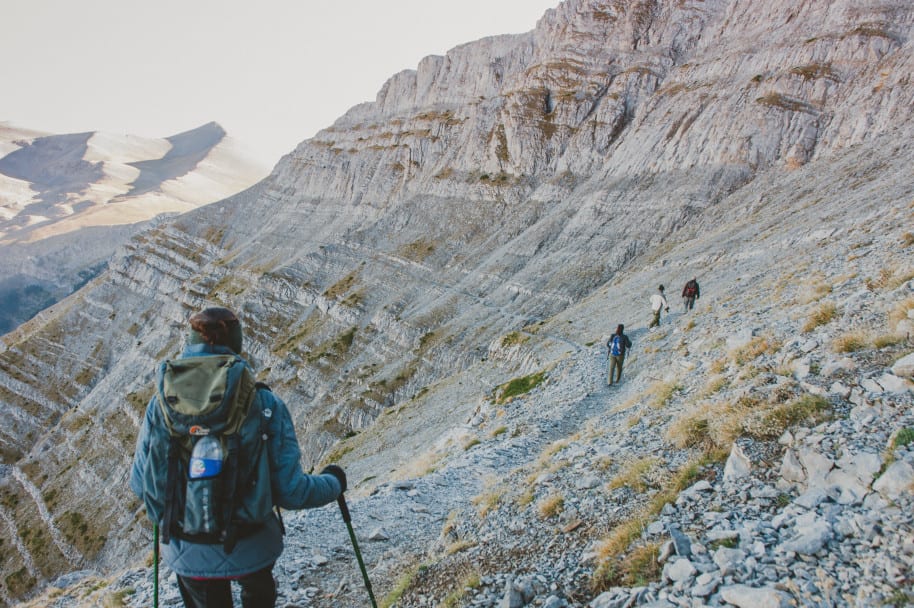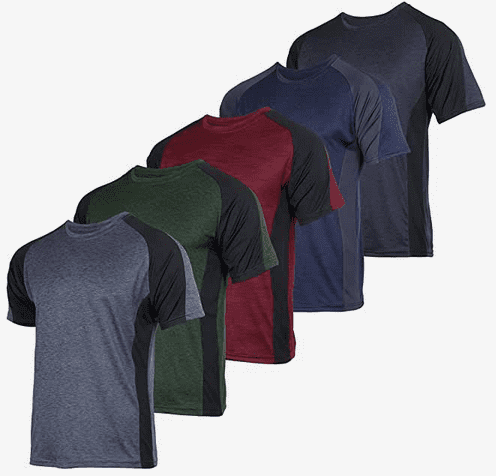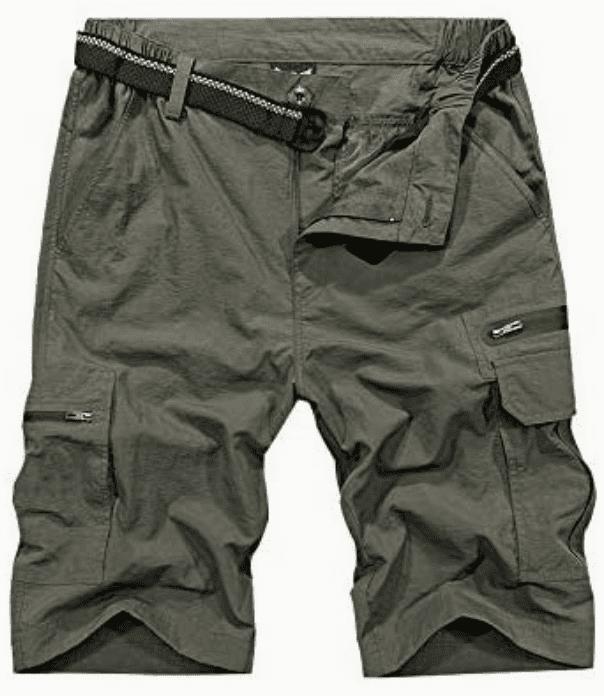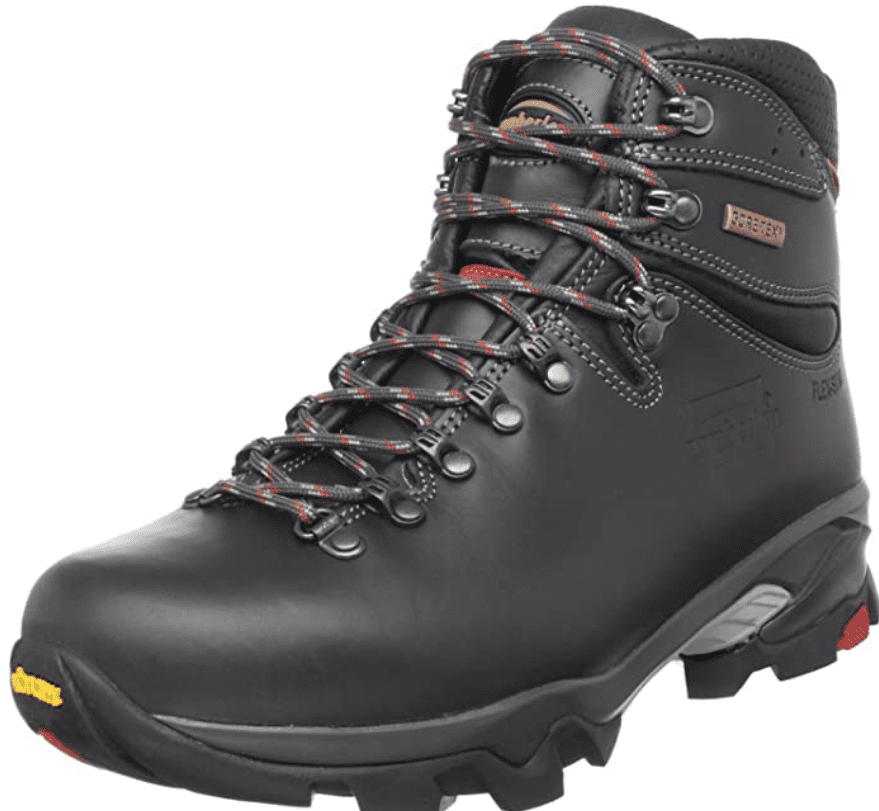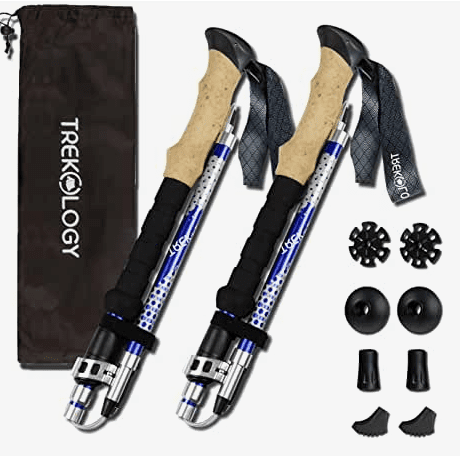Hiking is an outdoor activity that requires proper clothing to ensure comfort, safety, and enjoyment. Whether you are going for a short hike or an extended trek, wearing the right clothes is essential to protect yourself from the elements and stay comfortable throughout your journey.
Choosing the right clothes for hiking involves considering factors such as the weather, terrain, and duration of your hike. This guide will provide you with essential tips on what clothes to wear for hiking, so you can make the most of your experience in the great outdoors.
Table of Contents
Important Factors for Choosing Hiking Clothes
Dress for Different Seasons
Hiking Attire Checklist
Importance of Sun Protection and First Aid
Hiking Attire Recommendations
Frequently Asked Questions & Tips and Tricks
Time for a Hike?
Important Factors to Think About When Choosing Hiking Clothes
When selecting hiking clothes for a hike, there are several important factors to consider. Here are some of the most crucial things to think about:
- Weather conditions: You need to be prepared for the weather conditions you’ll face on your hike. Check the forecast and plan accordingly. If you’re expecting rain, make sure to bring a waterproof jacket and pants. If it’s going to be sunny, wear clothing that will protect you from the sun, such as a wide-brimmed hat and UV-protective clothing.
- Terrain: The terrain you’ll be hiking on will also affect what you wear. If you’re hiking in rough terrain, wear durable pants that will protect your legs from scratches and abrasions. If you’re hiking in a rocky area, wear sturdy hiking boots with good ankle support to prevent injuries.
- Duration of the hike: The duration of your hike will also determine what clothes you wear. If you’re going on a long hike, you’ll want to wear comfortable, moisture-wicking clothing that won’t chafe or rub. If you’re going on a shorter hike, you may be able to get away with wearing something less durable or technical.
- Layering: Layering is important for hiking because it allows you to adjust your clothing as needed throughout the day. Start with a moisture-wicking base layer, add a mid-layer for insulation, and finish with an outer layer that will protect you from the elements.
- Comfort: Finally, make sure that whatever clothing you choose is comfortable and fits well. Avoid clothing that’s too tight or restrictive, as this can hinder your movement and make your hike less enjoyable.
Dress for Different Seasons
What to Wear Hiking in Summer
Comfortable summer hiking clothes that can be easily worn for that warmer weather usually means not having to wear extra layers. This of course depends on the climate you are hiking in. Hiking shorts and hiking shoes might be preferential over hiking pants or merino wool. Warm weather hiking likely calls for moisture wicking materials that are odor resistant. If you are a hardcore hiker, it’s not unreasonalbe to believe you will sweat on those longer hikes. The proper outdoor gear needs to wick moisture and keep you comfortable.
Your summer hiking gear should consist of a light rain jacket and moisture wicking fabrics. It’s a good idea to have a small daypack to carry your hiking essentials. Let’s not forget hiking boots for rougher terrain, or something more comfortable like hiking sandals for that beach hike.
What to Wear Hiking in the Fall
Although fall can offer an amazing hike, temperatures can change dramatically during unexpected moments. For base layers, you can go for undies made of fast drying material or moisture wicking underwear. Hiking shirts either short or long sleeve for insulation, and a pair of yoga pants or even rain pants depending on the forcast. Finally, your outer-layer should be a hiking rain jacket or one of those synthetic insulated jackets that keep out the rain, cold, and wind.
If you choose to wear hiking boots, look for ones that have extra ankle support for that challenging uneven hiking trail. Ultimately your hiking outfit comes down to personal preference.
What to Wear Hiking in Winter
Cold weather hiking is certainly a challenge if you are unprepared. Experts suggest wearing winter clothing like onions! This means the body can absorb and store heat and therefore provide sufficient protection from cold and heat. Dressing up in layers in winter also regulates your body temperature. If you feel cold or hot you may add or remove one layer easily or add another layer.
Winter hiking has the challenge of picking the right layers to stay warm, yet not cause one to overheat. The extreme cold calls for a down jacket, long sleeve shirt, base layers of moisture wicking clothing. Some might prefer wearing merino wool, but this comes down to personal preference. Proper winter hiking footwear should be a set of hiking boots or hiking shoes that keep your feet warm, insulated, and dry. Insulated rain jackets are a good option to repel that snow, wind or moisture.
What to Wear When Hiking in Spring
It can be difficult to choose clothing to use on spring hikes. The best hiking clothes for spring will prepare you for sun, wind, and rain. Your hiking essentials should include a base layer of proper hiking attire for warm temperatures, wind, and cold weather. Hiking pants or rain pants are recommended. Later spring hiking shorts or short sleeve hiking shirts are exceptable.
Not only do you need to be prepared for the elements, but must also think about what the elements have done to the hiking trails. The trail terrain might be muddy and slippery. The best hiking shoes or boots should have solid soles with a textured grip, and protect your feet from getting wet. Outdoor apparel is important to tackle the elements.
Choose Synthetic Materials
Ideally hiking clothing should consist of dry-resistant and water-reusable material. Cotton for example does not dry easily during hiking and can keep you cold if wet. Synthetic materials such as polyester, nylon, and saftex are better options because of their wicking and ventilation qualities.
What to Wear When Hiking Checklist
- comfortable hiking hat (must have)
- comfortable hiking sun glasses (must have)
- neck Gatier (optional)
- base layer comfortable shirt (must have)
- long sleeve hiking shirt (optional)
- light wind & rain or fleece jacket (must have)
- hiking shorts/pants (must have)
- hiking socks (must have)
- hiking shoes/boots (must have)
- hiking poles (optional)
- backpack (optional)
Sun Protection While Hiking
Sun protection is important while hiking because prolonged exposure to the sun’s harmful UV rays can cause skin damage and increase the risk of skin cancer. Especially summer hiking, you are often exposed to the hot sun for long periods, especially at high altitudes where the sun’s rays are stronger.
To protect your skin, it’s important to wear sunscreen with an SPF of at least 30, a hat with a wide brim to shield your face and neck, and clothing that covers your arms and legs. Sunglasses are also essential to protect your eyes from UV damage. By taking these precautions, you can prevent painful sunburns, reduce your risk of skin cancer, and make your hike more enjoyable.
Hiking and First Aid
Taking a small first aid kit is a good idea for a hike because accidents and injuries can happen while on the trail. Even minor injuries, such as blisters or cuts, can become a major problem if left untreated. Having a basic first aid kit can help you address injuries and prevent them from becoming more serious. A typical hiking first aid kit might include bandages, antiseptic wipes, pain relievers, tweezers, and small pair of scissors.
Our Recommendations for Hiking Clothing
Hiking Hats – Skatgit Rain and Hiking Hat
This is one of the best rain hats on the market. Men’s Skagit Rain Hats are a great choice for anyone who needs a durable and reliable hat for wet weather conditions. These hats are designed with a waterproof and breathable material, making them perfect for outdoor activities such as hiking, fishing, or camping in the rain.
One of the standout features of these hats is their wide brim, which provides excellent protection from rain and sun. The brim is also reinforced with a wire insert that allows you to shape it to your liking, providing a customizable fit and look.
The Men’s Skagit Rain Hats are also lightweight and packable, making them easy to take with you on the go. They come in a variety of colors and sizes to suit your personal style and head size.
Hiking Sunglasses – Costa Del Mar Rincon 580G Glass Polarized Sunglasses
The 580G glass lenses provide excellent clarity and are polarized to reduce glare and enhance contrast, making it easier to see clearly in bright sunlight or reflective surfaces like water or snow. The frames are made from durable materials and have a comfortable fit, so they should be able to withstand the wear and tear of outdoor activities.
Neck Protection -TICONN Neck Gaiter Face Cover Scarf
The gaiter is made from a breathable and moisture-wicking material that helps keep you cool and dry, while also protecting your face and neck from the sun, wind, and dust. It’s lightweight and stretchy, so it should be comfortable to wear for long periods of time.
Many reviewers also noted that the gaiter provides good coverage and stays in place during outdoor activities like hiking, running, and cycling. It can be worn in a variety of ways, such as a face mask, neck gaiter, or headband, making it a versatile piece of outdoor gear.
Base Layers Underwear – MERIWOOL Boxer Briefs Merino Wool
The underwear is made from soft and breathable merino wool, which is known for its ability to regulate body temperature and wick away moisture, keeping you dry and comfortable during high-intensity activities like hiking. The fabric is also odor-resistant, making it a great choice for multi-day trips when washing facilities may not be available.
Many reviewers praised the comfortable fit and durability of these boxer briefs, noting that they held up well during long hikes or backpacking trips. They are available in both men’s and women’s sizes, so they should be able to accommodate a variety of body types.
Base Layers – Real Essentials Undershirt or T-shirt
The shirts are made from a moisture-wicking and breathable fabric that helps to keep you cool and dry during physical activity. They are designed with a mesh construction that increases airflow, making them ideal for use in warm weather conditions.
Additionally, the shirts are lightweight and stretchy, providing a comfortable fit that allows for a full range of motion. Many reviewers noted that the shirts held up well during high-intensity activities like hiking and running and that they were easy to care for and maintain.
Long Sleeve Shirt – Real Essentials Moisture Wicking Long Sleeve
Real Essentials 4 Pack: Men’s Dry-Fit Moisture Wicking Performance Long Sleeve shirts are an excellent choice for hikers or anyone looking for comfortable and functional activewear. The shirts are made from a high-quality polyester material that effectively wicks away moisture, keeping you dry and comfortable during physical activity.
The shirts also feature a durable construction that can withstand the rigors of outdoor activities, such as hiking or camping. The long sleeve design provides additional coverage and protection from the sun, wind, or insects.
Furthermore, the shirts have a stylish and modern look, with a variety of colors to choose from. They are also available in a pack of four, providing excellent value for money.
Hiking Rain Jacket – Columbia Glennaker Lake Rain Jacket for Men
The Columbia Glennaker Lake Rain Jacket for Men is an excellent choice for hikers or anyone looking for a lightweight and durable rain jacket. The jacket is made from a high-quality nylon material that effectively repels water, keeping you dry and comfortable during rainy weather conditions.
The jacket also features an adjustable hood and cuffs, which provide additional protection from the elements. The mesh lining enhances breathability and helps to regulate your body temperature, preventing overheating.
Furthermore, the jacket has a stylish and modern design, with a variety of colors to choose from. It is also lightweight and compact, making it easy to pack and carry on your hiking trips.
Hiking Shorts – Jessie Kidden Outdoor Hiking Shorts
The Jessie Kidden Men’s Outdoor Casual Expandable Waist Lightweight Water Resistant pants are a great choice for hikers or anyone looking for comfortable and functional outdoor pants. These pants are made from a high-quality polyester material that provides excellent durability and water resistance, keeping you dry and comfortable during outdoor activities.
The pants feature an expandable waistband that provides a comfortable and customizable fit, and the lightweight design ensures freedom of movement during physical activity. The water-resistant finish also ensures that the pants remain dry and comfortable, even during wet weather conditions.
Furthermore, the pants have a stylish and casual look, making them suitable for everyday wear as well as outdoor activities. They are available in a variety of colors to choose from, and the multiple pockets provide ample storage space for small items.
Hiking Pants – Ascend Hiking Pants
The Ascend Hiking Pants for Men are an excellent choice for hikers or anyone looking for comfortable and durable outdoor pants. These pants are made from a high-quality nylon material that provides excellent durability and protection from the elements.
The pants feature a comfortable and functional design, with a gusseted crotch and articulated knees that provide freedom of movement and prevent chafing. The pants also have multiple pockets, including zippered security pockets, which provide ample storage space for small items.
Furthermore, the pants have a stylish and modern look, with a variety of colors to choose from. They are also lightweight and breathable, making them suitable for hiking in different weather conditions.
Hiking Socks – Feideer Hiking Socks
FEIDEER Men’s Hiking Walking Socks are a great choice for hikers or anyone looking for comfortable and durable socks for outdoor activities. These socks are made from a high-quality blend of cotton, polyester, and spandex, which provides excellent comfort, cushioning, and moisture-wicking properties.
The socks feature a quarter crew design that provides ample coverage and protection from blisters and abrasions, and the cushioned sole provides additional comfort during physical activity. The arch support and elastic cuff ensure a secure and comfortable fit, preventing slippage and bunching.
Furthermore, the socks have a stylish and modern look, with a variety of colors to choose from. They are available in a multi-pack, providing excellent value for money, and the high-quality construction ensures long-lasting durability.
Hiking Shoes – KEEN Utility Targhee II Waterproof Hiking Shoes
The KEEN Utility Targhee II Waterproof Hiking Shoes are an excellent choice for hikers or anyone looking for comfortable, durable, and waterproof footwear for outdoor activities. These shoes are made from a high-quality leather and textile material that provides excellent durability and protection from the elements.
The shoes feature a waterproof and breathable membrane that keeps your feet dry and comfortable during wet weather conditions, and the removable EVA footbed provides additional cushioning and support. The non-marking rubber outsole provides excellent traction on various terrains, preventing slips and falls during physical activity.
Furthermore, the shoes have a stylish and modern design, with a variety of colors to choose from. They are also available in different sizes, ensuring a comfortable and secure fit for different foot sizes.
Hiking Boots – Zamberlan Men’s 1996 VIOZ LUX GTX RR
The Zamberlan Men’s 1996 VIOZ LUX GTX RR Leather Backpacking Boots are an exceptional choice for backpackers or anyone looking for durable, supportive, and waterproof footwear for outdoor adventures. These boots are made from high-quality Italian leather, which provides excellent durability and protection from the elements.
The boots feature a waterproof and breathable Gore-Tex membrane that keeps your feet dry and comfortable during wet weather conditions, and the Vibram outsole provides excellent traction on various terrains, preventing slips and falls during physical activity. The boots also have a Zamberlan Flex-STM system that allows for flexibility and support during long hikes and backpacking trips.
Furthermore, the boots have a stylish and modern design, with a variety of colors to choose from. They are also available in different sizes, ensuring a comfortable and secure fit for different foot sizes.
Hiking Poles – Trekology Trek-Z Collapsible Hiking & Trekking Poles
The Trekology Trek-Z Collapsible Hiking & Trekking Poles are a pair of lightweight, collapsible hiking poles that provide balance support for seniors, women, and men. They are made of durable aluminum alloy and can be easily adjusted to different heights to accommodate various users and terrains. The poles come with comfortable foam handles, wrist straps, and tungsten carbide tips that provide excellent traction on various surfaces. The collapsible design allows for easy storage and transport, making them a convenient and essential accessory for hiking and trekking.
Frequently Asked Questions
Q) What should I wear for beginner hiking?
As a beginner hiker, it is important to wear clothing and gear that is comfortable, functional, and appropriate for the terrain and weather conditions. Here are some recommendations for what a beginner hiker should wear for hiking:
1) Hiking shoes: Invest in a pair of sturdy and comfortable hiking shoes that provide good support and traction on different terrains. Avoid wearing sneakers or running shoes as they may not provide enough support and protection.
2) Comfortable and moisture-wicking clothing: Wear moisture-wicking clothing that is comfortable and allows for freedom of movement. Avoid cotton clothing as it can become damp and uncomfortable during physical activity.
3) Layers: Dress in layers to regulate body temperature as the weather can change quickly during a hike. Start with a base layer of moisture-wicking clothing, add a mid-layer for insulation, and a waterproof outer layer for protection from rain or wind.
4) Hat and sunglasses: Protect yourself from the sun by wearing a hat and sunglasses. Choose a hat with a brim that provides shade for your face and neck.
5) Sunscreen and insect repellent: Apply sunscreen and insect repellent to protect your skin from harmful UV rays and pesky bugs.
6) Backpack: Bring a backpack to carry essential items such as water, snacks, first aid kit, and extra clothing.
Overall, it is important to dress appropriately for the terrain and weather conditions and prioritize comfort and functionality when choosing hiking gear. Start with the basics and gradually invest in more specialized gear as you gain more experience and confidence on the trail.
Q) What is the #1 etiquette rule while hiking?
The #1 etiquette rule while hiking is to practice Leave No Trace principles. This means that hikers should strive to leave the trail and surrounding environment exactly as they found it, without leaving any trace of their visit. Leave No Trace principles include:
1) Pack it in, pack it out: Carry out all trash and litter, including food scraps and toilet paper.
2) Stay on the trail: Avoid cutting switchbacks or creating new trails, as this can cause erosion and damage to the surrounding environment.
3) Respect wildlife: Observe wildlife from a distance and avoid feeding or approaching them.
4) Be considerate of other hikers: Yield to other hikers on the trail and avoid making excessive noise or disrupting the natural environment.
5) Respect private property: Stay on designated trails and respect private property boundaries.
By practicing Leave No Trace principles, hikers can help preserve the natural beauty of hiking trails and ensure that they remain accessible for future generations. It is important to remember that hiking trails are shared spaces, and practicing good etiquette and respect for others is essential for a safe and enjoyable hiking experience for all.
Q) Are sneakers OK for hiking?
While sneakers are comfortable and easy to wear, they may not be the best choice for hiking, especially on more rugged and challenging terrain. Sneakers lack the support, traction, and durability needed for hiking and may not provide adequate protection from rocks, roots, and other obstacles on the trail.
Instead, it is recommended to wear sturdy and comfortable hiking shoes or boots that are designed for hiking and provide good support, traction, and protection. Hiking shoes or boots usually have features such as waterproofing, breathable materials, and rugged soles that provide excellent traction on various terrains.
However, if you are planning a short and easy hike on well-maintained trails, sneakers may be sufficient. In this case, it is important to choose a pair of sneakers that provide good support and traction, and are comfortable for extended periods of walking or hiking.
Overall, it is important to wear appropriate footwear that is comfortable, supportive, and suitable for the terrain and conditions of the hike. Hiking shoes or boots are generally a better option than sneakers for hiking, but the choice ultimately depends on the nature of the hike and personal preference
Q) What can I wear instead of hiking shoes?
If you prefer not to wear hiking shoes or boots, there are some alternative options that you can consider for hiking:
1) Trail running shoes: Trail running shoes are designed for off-road running and can also work well for hiking on less rugged trails. They are lightweight, breathable, and provide good traction on various terrains. However, they may not provide as much support or protection as hiking shoes or boots.
2) Approach shoes: Approach shoes are a hybrid between hiking shoes and rock climbing shoes, and are designed for approaches to climbing routes. They provide good grip and support on rocky terrain and can work well for hiking on technical trails. However, they may not be as comfortable for extended periods of walking as hiking shoes or boots.
3) Sandals: Sandals can work well for hiking on flat and easy trails in warm weather. They are lightweight, breathable, and allow your feet to breathe. However, they do not provide as much support or protection as hiking shoes or boots and can be uncomfortable on rocky or uneven terrain.
It is important to choose footwear that is comfortable, suitable for the terrain and weather conditions, and provides adequate support and protection for your feet. Make sure to break in your shoes before your hike to avoid blisters and discomfort on the trail.
Tips and Tricks for Choosing the Best Hiking Clothes
Ready to find the best hiking clothes for your lifestyle? Keep these tips in mind:
1) Ensure you have enough room in the toe box of your boot.
2) No cotton! It holds onto water.
3) Brimmed hats will protect your face from the sun.
4) If it’s cold, layer your clothes.
5) Function is number one; fashion is an afterthought.
6) Wicking is most important in your base layer.
7) Clothing with sun protection is your friend.
8) Lighter clothing will reduce strain on your body.
If you decide to invest in any of the quality hiking clothes on this list, or even just some of them, you will notice what a difference being comfy and prepared makes.
Time for a Hike?
What to wear when hiking is an important consideration that can impact your comfort, safety, and overall hiking experience. It is important to choose clothing and footwear that are comfortable, breathable, and suitable for the terrain and weather conditions. Hiking shoes or boots are generally recommended for more rugged terrain, while trail running shoes or sandals can be suitable for less challenging trails.
It is also important to plan ahead and check the weather forecast, trail conditions, and any regulations or restrictions before heading out for a hike. Dressing in layers can help you stay comfortable and adjust to changing weather conditions. In addition to clothing and footwear, hikers should also consider carrying a backpack with essential gear, such as water, food, a first aid kit, and navigation tools.
By dressing properly and planning ahead, hikers can ensure a safe, comfortable, and enjoyable hiking experience while minimizing their impact on the environment.
